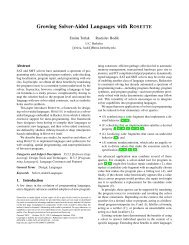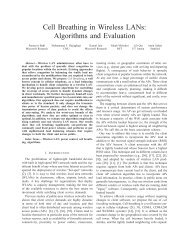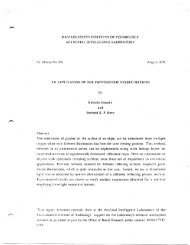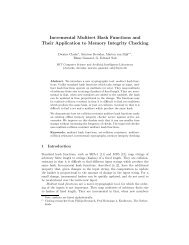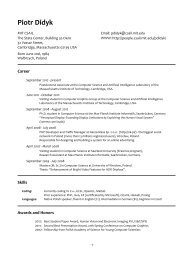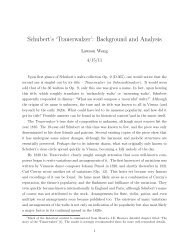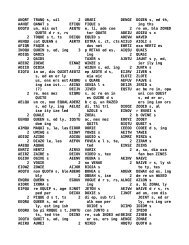Prism User's Guide - CSAIL People - MIT
Prism User's Guide - CSAIL People - MIT
Prism User's Guide - CSAIL People - MIT
Create successful ePaper yourself
Turn your PDF publications into a flip-book with our unique Google optimized e-Paper software.
88 <strong>Prism</strong> User S <strong>Guide</strong><br />
* Field Width - Type a value in this box to change the width of the field<br />
that <strong>Prism</strong> allocates to every data element.<br />
For the text representation, the field width specifies the number of characters<br />
in each column. If a number is too large for the field width you<br />
specify, dots are printed instead of the number.<br />
For dither, threshold, colormap, and vector representations, the field width<br />
specifies how wide (in pixels) the representation of each data element is<br />
to be. By default, dither, threshold, and colormap visualizers are scaled to<br />
fit the display window. Note, however, that for dither visualizers, the gray<br />
shading may be more noticeable with a smaller field width.<br />
For the graph representation, the field width specifies the horizontal spacing<br />
between elements.<br />
For the surface representation, it specifies the spacing of elements along<br />
both directions of the plane.<br />
Field Height - For graph and surface representations, changing this<br />
value affects the maximum height (in pixels) to which <strong>Prism</strong> scales every<br />
data value.<br />
* Precision - Type a value in this box to change the precision with which<br />
<strong>Prism</strong> displays real numbers in a text visualizer. The precision must be less<br />
than the field width. By default, <strong>Prism</strong> prints doubles with 16 significant<br />
digits, and floating-point values with 7 significant digits. You can change<br />
this default by issuing the set command with the $dprecision argument<br />
(for doubles) or $fprecision argument (for floating-point<br />
values). For example,<br />
set $d recision 11<br />
sets the default precision for doubles to 11 significant digits.<br />
* Minimum and Maximum - For colormap representations, use these<br />
variables to specify the minimum and maximum values that <strong>Prism</strong> is to<br />
use in assigning color values to the data elements. Data elements that have<br />
values below the minimum and above the maximum are assigned default<br />
colors.<br />
For graph, surface, and vector representations, these parameters represent<br />
the bottom and top of the range that is to be represented. Values below the<br />
minimum are shown as the minimum; values above the maximum are<br />
shown as the maximum.<br />
Version 1.2, March 1993<br />
Copyright © 1993 Thinking Machines Corporation



